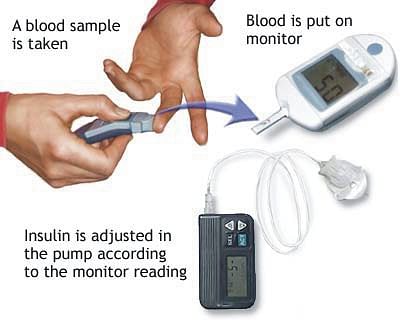Diabetes and exercise: When to monitor blood sugar
Dr Tareq Salahuddin
If you have diabetes and you want to exercise, that is great. Exercise can help you improve your overall fitness and help you manage your condition. But do not forget to track (monitor and record) your blood sugar before, during and after exercise. It can help you and your healthcare team see how your body responds to exercise. And it can help prevent dangerous episodes of low blood sugar (hypo-glycemia), high blood sugar (hyperglycemia) and high urine ketone levels (ketoacidosis).Find out when it is safe for you to start exercising, when to check your blood sugar and what to do if you experience symptoms of low blood sugar. If you have been inactive or have a medical condition, talk to a physician before you begin your exercise programme. Before you exercise: Check your blood sugar twice Your goal is to make sure that your blood sugar is not too low before you begin exercising and that it does not drop too low during and after your workout. To avoid swings in your blood sugar, test it 30 minutes before you start and then once again immediately before exercising. This can help you determine if your blood sugar level is stable, rising or falling before you start to exercise. Avoid problems by following these guidelines: - Less than 100 milligrams per deciliter (mg/dL)? No matter what type of diabetes you have, if your blood sugar is less than 100 mg/dL, eat a small carbohydrate-containing snack such as fruit or crackers before exercising.
- 100 to 250 mg/dL? For most people, this is a safe pre-exercise blood sugar range.
- 250 mg/dL or higher? Before exercising, test your urine for ketones. If the results show a moderate or high ketone level, don't exercise. Wait until your ketones test indicates a low level. The excess ketones indicate that your body does not have enough insulin to control your blood sugar and can lead to ketoacidosis.
- 300 mg/dL or higher? No matter what type of diabetes you have, do not exercise. You need to bring your blood sugar down before you can safely exercise because you risk an even greater increase in your blood sugar, which can lead to ketoacidosis.
During exercise: Check your blood sugar every 30 minutes
It is especially important to check your blood sugar during exercise if you are starting aerobic exercise for the first time, trying a new activity or sport, or increasing the intensity or duration of your workout. If you exercise for more than an hour, especially if you have type 1 diabetes, stop and test your blood sugar every 30 minutes. If it is 70 mg/dL or lower, or if it is not that low but you have symptoms of low blood sugar - feeling shaky, weak, anxious, sweaty, or confused - eat a snack that serves as a fast-acting source of sugar. Examples include: - Two or three glucose tablets
- 1/2 cup of fruit juice
- 1/2 cup of regular (not diet) soft drink
- Five or six pieces of hard candy Recheck your blood sugar 15 minutes after this snack. If it is still too low, have another serving and test again 15 minutes later, until your blood sugar reaches 70 mg/dL or higher.
After exercise: Check your blood sugar at least twice
When you have finished exercising, check your blood sugar again. The more strenuous the workout, the longer your blood sugar is affected. Check your blood sugar a couple of times after exercising to make sure you are not developing hypo-glycemia, which can occur even hours after you have stopped. Exercise draws on reserve sugar stored in your muscles and liver. As your body rebuilds those stores, it takes sugar from your blood, lowering your blood sugar level. Be encouraged
You may think that testing your blood sugar before, during and after you exercise requires a lot of effort. Keep in mind that once you and your healthcare team know how your body responds to aerobic exercise, you can probably cut back on testing.
|

|